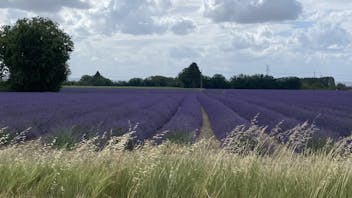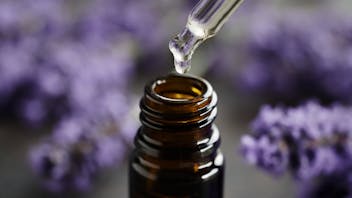Product Overview
The distinct aroma of Lavender Maillette – a clonal variety of Lavandula angustifolia that does not reproduce by seed – can be attributed to its dominant ester, linalyl acetate, and a very low camphor content. The aroma is noticeably sweeter than most Lavenders and its clear, crystalline bouquet makes it a favorite choice in aromatherapy applications for children, in skin care and cosmetics, and in perfumery. Perfumers may also find that the Maillettes are more aromatically consistent from year to year than ‘population’ Lavenders that vary considerably more with each year’s harvest.[1]
In consumer products, true Lavender (called interchangeably Lavandula angustifolia, L. officinalis and L. vera[2]) is often adulterated or replaced by the less expensive, but higher yielding hybrid Lavandins. This substitution only approximates the complex and robust aroma of Lavender and offers a much narrower spectrum of aromatic constituents.[3] Although this iconic plant thrives in poor, rocky soil in many parts of the world, France is still considered to be the premier growing region and is the source of two of our other best-selling Lavender essential oils (High Elevation and Wild).
In aromatherapy, Lavender is one of the most commonly used essential oils due to its general availability, modest price, versatility and universally pleasant scent. Lavender has been an integral part of fine fragrances for centuries – it is a middle to top note, can be used as a perfume modifier, and can also help mask unpleasant aromas of oils you want to use in blends. It is a popular addition to skincare preparations of all types, and is a favorite in diffusers, outdoor sprays, massage blends, and in relaxing baths. Lavender oil has a cooling and drying aroma that is said to help calm the body, mind and spirit. This is one oil that should be part of everyone’s collection!
1 Private Communication
2 Williams, David G. The Chemistry of Essential Oils, 2nd ed., 2008, p. 325.
3 Sheppard-Hanger, Sylla. The Aromatherapy Practitioner Reference Manual, Vol. 1, 1994, p. 263.



